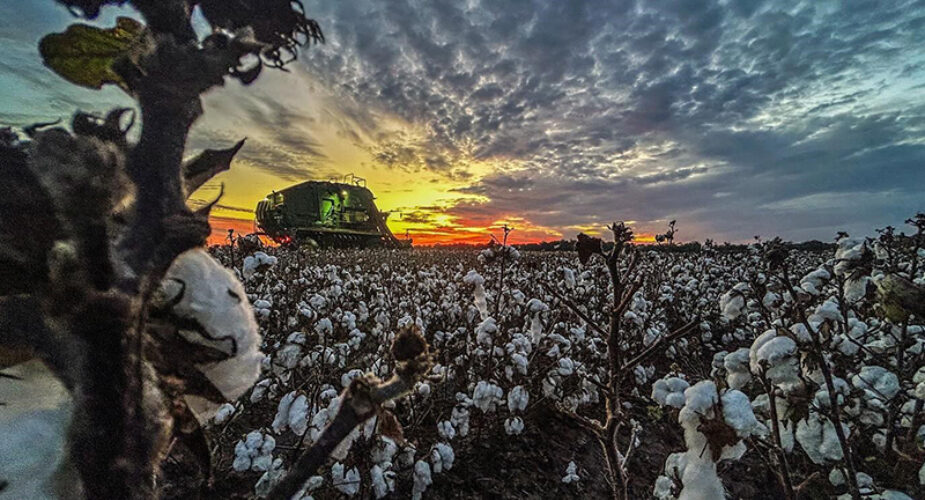Sustainability reporting
Our sustainability journey
The Australian cotton industry, the first in Australian agriculture to independently assess its environmental impact in 1991, has been working to improve its sustainability ever since. Proud of its progress, the industry recognizes that there is still more to achieve. Managing sustainability, like growing cotton, is a complex process. The industry doesn't claim to be perfect but aims to lead in sustainable cotton production globally.
Australian Cotton Sustainability Framework website
The new Australian Cotton Sustainability Framework website is a one-stop-shop for information on the sustainability performance of the Australian Cotton Industry. From reports and factsheets to information on priority topics and downloadable data on our performance. Visit australiancottonsustainability.org.au
Our sustainability framework
PLANET. PEOPLE. PADDOCK.. is the Australian cotton industry’s sustainability framework. It recognises sustainability is integral to the industry’s future and provides a path for the entire industry to stay in business. Through a process of stakeholder consultation and review, eight environmental, economic and social sustainability topics have been assessed as being most important to cotton growers and stakeholders inside and outside the industry.
PLANET. PEOPLE. PADDOCK. guides the industry’s work to:
- identify the environmental, social and economic topics assessed as being most important to industry and its stakeholders
- coordinate a whole-of-industry strategy to manage these topics
- engage with stakeholders on actions and progress.
PLANET. PEOPLE. PADDOCK. is currently targeted at on-farm cotton production. It is not a compulsory standard or a brand. It is a framework that recognises sustainability is an integral part of doing business, and provides a path for the entire industry to benefit from improving sustainability performance.
The data framework behind PLANET. PEOPLE. PADDOCK. is currently being revamped in an ambitious Australian proof of concept to cotton and other agriculture industries to collect better sustainability data and use it for more purposes. Find out more about the project.
Our alignment with the Sustainable Development Goals
The UN Sustainable Development Goals (SDGs) are widely recognised as providing a global pathway to achieve a better and more sustainable future for all. They address the global challenges we all face. The SDGs provide goals and targets for every individual, business, industry and nation to work towards. The Stakeholder Consultation Report Executive Summary - December 2020 provides a summary of the most relevant SDGs to the Australian cotton industry, and how we are working to do our share to contribute to them.
Industry progress on sustainability reporting and developing targets
- 2014: First Sustainability Report provided data on 45 social, economic and environmental indicators.
- 2016: Sustainability Working Group (SWG) formed to oversee the industry’s ongoing commitment to sustainability reporting and implementation.
- 2016-2019: Priority sustainability topics developed by the SWG through technical advice, research, stakeholder consultation, and validation. In 2016, 35 internal and external stakeholders attended a Cotton Sustainability Stakeholder Forum to provide guidance and feedback to the Australian cotton industry on sustainability issues, draft targets, indicators and reporting. Other stakeholders were contacted directly. Feedback from this Forum was used to refine targets and release a Background Reference Paper later in 2016 that outlined eight sustainability topics and associated indicators, and provided rationale for their selection. In 2018, feedback was sought on draft sustainability targets from stakeholders representing customers and retailers, suppliers and service providers, interest groups, agriculture RDCs, all levels of government, community groups, employment representatives, cotton industry representatives, the Cotton Innovation Network and the research community.
- 2019: Second Sustainability Report for the five years to June 2019 provided data on the eight priority social, economic and environmental topics. Data gathered report allowed us to compare our performance in priority topics from 2014 to 2019. This highlighted we are on track in some topics, and in other topics we can do better.
- 2020-22: Sustainability targets finalised. Small expert groups reviewed data from 2014 and 2019 Sustainability Reports. This process has resulted in draft targets for several priority topics. It has also shown other priority topics need more time to develop indicators or targets, especially those that have a high degree of crossover with other Australian agriculture sectors. Having consistency with other agriculture sustainability frameworks is very important to the cotton industry. Stakeholder consultation on draft targets was undertaken from mid-2020, as outlined by the Stakeholder Consultation Report Executive Summary - December 2020. Work continues on the finalisation of the targets and stakeholder engagement, including the formation of the Australian Cotton Sustainability Reference Group in 2021.


